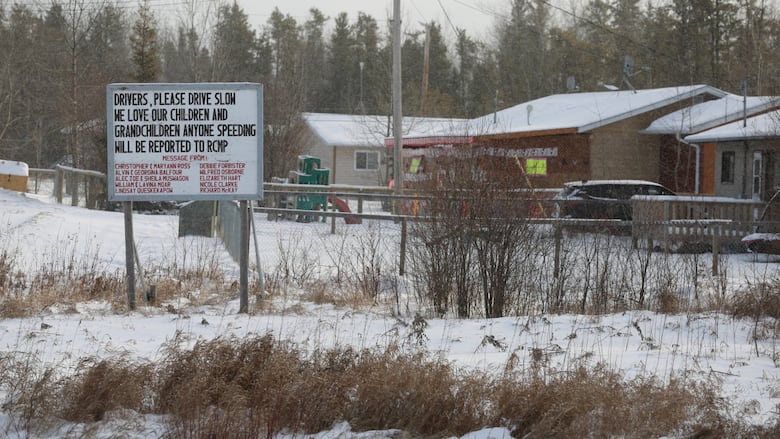Manitoba needs more support for youth, First Nations leaders say following stabbing death of teen

As the community of Norway House grapples with the recent stabbing death of a 15 year old boy, leaders are focused on how to handle the trauma and prevent youth violence in the future.
Two community members have been charged with second-degree murder in connection to the attack early Saturday —a 38-year-old man and a 14-year-old boy.
"People are devastated," said Chief Larson Anderson of Norway House Cree Nation.
"We are a small community and many of us know each other," he said, explaining that with just one school in the community of roughly 5,400 people, most students will know the victim.
"When you lose a young person like this, it really hurts."

While Norway House has a local crisis response team, Manitoba Keewatinowi Okimakanak is sending additional support on Friday to help people process the trauma they might be feeling following the teen's death.
Greg Fontaine, program manager of MKO's Mobile Crisis Response Team, said support can range from visits in people's homes to sitting in a vehicle with a cup of coffee.
"We meet people where they're at," said Fontaine. "So whether that's a one-on-one session or whether that's building a fire together, a lot of natural, beautiful things happen when you're engaging with people in a meaningful way."
Fontaine said the team of Indigenous crisis responders includes counsellors and people who've lived through similar experiences, offering both traditional and non-Indigenous approaches to care.
"We don't come with a blueprint, we come with an open mind and open heart."
The mobile team will connect with local crisis workers to identify who might need support the most.
They'll also visit the school and workplaces and create safe spaces for people to open up.

He said healing can be different for youth than adults, especially since many Norway House teens will have some connection to the boy who died.
"They carry that heaviness," said Fontaine, adding that teenagers sometimes work though their emotions while doing activities like sports or arts.
He recounted a time when a teen opened up to him while playing a video game.
"That freed up that safe space for that young person to share some of their experience about what they missed about their recently deceased sibling."
When it comes to relatives of the victim, Fontaine said crisis workers will help family members look for ways to keep their loved one's memory alive.
"It will continue to be a missing piece in your life for as long as you walk this earth," he said. "So whatever nourishes those missing pieces are things that we look for. "
Youth supports lacking, says advocate
Manitoba's Advocate for Children and Youth said her office will review a report from the chief medical examiner on the youth's death, and will look into whether he'd been involved with the child welfare system.
Sherry Gott said her recent annual report highlighted a shortage of services geared toward children and youth, particularly in remote First Nations communities.
"There is a lack of mental health workers, a lack of psychologists," said the advocate, adding that many Indigenous youth are struggling with the intergenerational trauma of colonization and residential schools.

Gott said help is especially scarce for youth dealing with addictions, which she said contributed to the death of 18 children from overdose in the past year alone.
"In Manitoba most of the support and services are geared toward adults," said Gott.
"I know that Minister [Bernadette] Smith is working on a strategy," she said, referring to the provincial cabinet member responsible for addictions and mental health.
"But I think that needs to happen now," she said, "or else we are going to continue to see things like what happened these past few days in Norway House."
Daily battle
Anderson said his community has always prided itself on being progressive, offering things like youth employment services and recreational facilities.
He said his community is the fastest-growing First Nation in Manitoba with a large number of people under 25.
But Anderson said as much as Norway House might try to keep young people active and engaged, their efforts are limited by resources.
"We don't have the capacity or the ability to hire enough people to do everything that needs to be done," Anderson said. "Even though we have more than most communities, we still fall in that same predicament where you are wanting something else to fill their time.
"So it's a daily battle."
Fontaine said while young people in Norway House might be connected online, the community's sprawling geography can hinder their ability to have regular face-to-face contact.

"It's not like where it's one strip of road, and all the houses are on that one strip," said Fontaine, who grew up in Norway House. "It takes some doing to want to get to your cousin's place, or your friend's or your auntie's."
He said MKO's Mobile Crisis Response Team will return two weeks after their initial visit, to make sure they reach everyone who wants to talk.
"Not everybody is ready by the time that we get there," he said, adding that help is just a phone call away, whenever anyone wants to talk.

